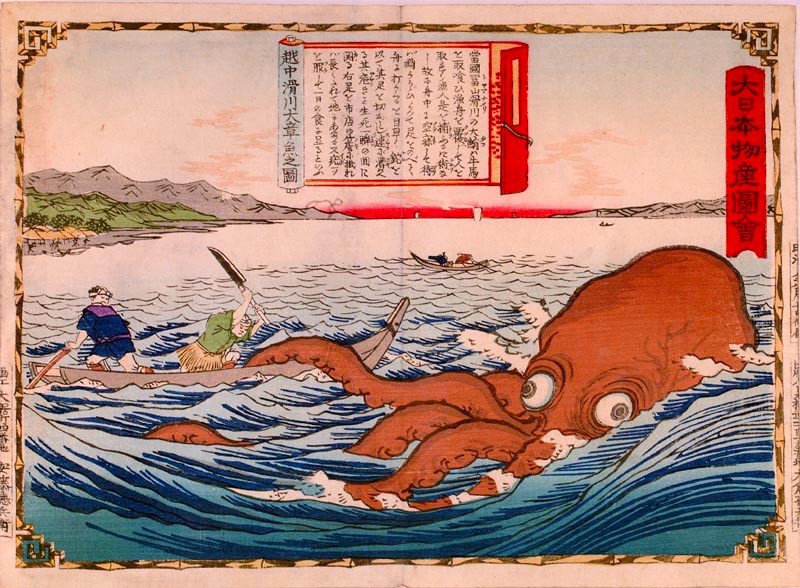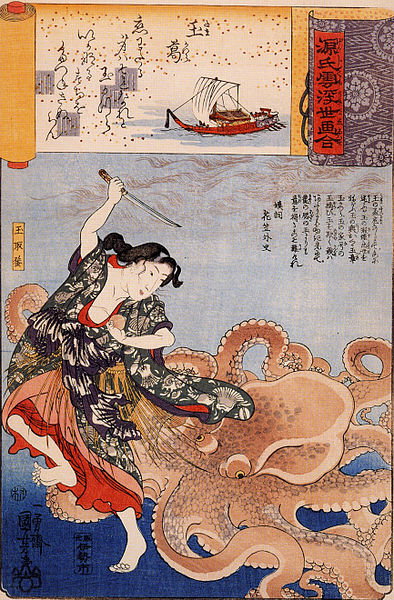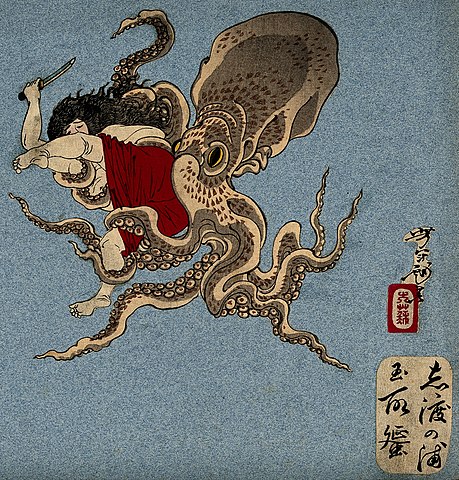
The Thammasat University Library has acquired a new book that should be useful for students and ajarns who are interested in cognition, physiology, philosophy, and natural science. Other Minds: The Octopus, the Sea, and the Deep Origins of Consciousness is shelved in the General Stacks of the Pridi Banomyong Library, Tha Prachan campus. It is about cephalopods, animals such as the squid, octopus, or nautilus. Found in the sea, they have large heads and tentacles. The word cephalopods derives from two words in the Greek language, meaning head-feet. If we look at an octopus or a squid, we mainly see a head and feet. In English-speaking countries, fishermen sometimes call cephalopods inkfish, because they squirt ink, usually to confuse a potential attacker.
The book’s author, Peter Godfrey-Smith, is an Australian philosopher of science and writer. He is professor of history and philosophy of science at the University of Sydney and an adjunct professor of philosophy at CUNY Graduate Center. His main interests are the philosophy of science and biology. He earned a Ph.D. in philosophy from the University of California, San Diego. Other Minds: The Octopus, The Sea, and the Deep Origins of Consciousness investigates explores how consciousness and intelligence began among animals, especially in cephalopods, compared to mammals and birds. Professor Godfrey-Smith observes that octopuses, squids, and nautiluses
are an island of mental complexity in the sea of invertebrate animals.

They have relatively large brains and complex behavior. Cephalopods are so unlike mammals that studying them is in some way like examining intelligent aliens, he argues. The brain of an octopus has 500m neurons, comparable to the brain of a dog and or a a three-year-old human. In laboratories, octopuses can escape from mazes and open food containers. Since intelligence evolved separately in cephalopods and vertebrates, Professor Godfrey-Smith finds it rewarding to go diving to observe octopuses in their native habitat. He finds them observant and even friendly. Some have different personalities. Others might try to reach out and touch people diving near them, unlike fish or other sea creatures who prefer not to get into contact with human beings. It is easy to tell if an octopus living in a laboratory does not like you. He will try to squirt water at you when he sees you. Professor Godfrey-Smith has observed:
If octopuses did not exist, it would be necessary to invent them. I don’t know if we could manage this, so it’s as well that we don’t have to. As we explore the relations between mind, body, evolution, and experience, nothing stretches our thinking the way an octopus does… If we want to think about something more truly alien, the octopus is ideal. Octopuses are distant from us in evolutionary terms, have a nervous system of very different design, and bodies with no bones and little fixed shape at all. What is it like to be an octopus?… An octopus has neurons, more or less like those of other animals, and many of them are organized into a brain. This brain evolved on an evolutionary path far removed from our own. All animals have common ancestors if we go back far enough in time, and the pattern of relatedness between different animal species takes the rough form of a tree, the “tree of life.” Our common ancestor with octopuses lies back near the beginning of the evolution of complex animals, perhaps 600 million years ago. That ancestor was a small, simple, marine animal—probably a flattened worm. Its many descendants include, on one branch, humans and the other animals with backbones (dolphins, bats, birds), and on another branch, a huge range of invertebrate animals, including the octopus. The octopus’s evolutionary path from the ancestral worm is unusual among the invertebrates because it led, as our path did, to a large nervous system. A common octopus has around 500 million neurons. That is many fewer than we have, but it is in the same range as a dog’s brain, which has 600 million or so. The octopus, along with some of its cephalopod cousins, is an independent experiment in the evolution of a large nervous system, the only such experiment outside the vertebrates. The result is an animal that is curious and a problem-solver. Some octopuses carry pairs of coconut half-shells around to reconstruct as spherical shelters. Octopuses can recognize (and take a disliking to) individual human keepers in aquariums. They learn the layout of their environment and hunt on long loops that take them reliably back to a den. Octopuses have eyes built on a “camera” design like ours, with a lens focusing an image. They also have sensitive chemical sensors in their suckers—they taste the world as they touch it. When watching their eyes, it is natural to think that perhaps octopuses are a bit like us, just with more arms and no bones. Like other animals, they use their senses to track what is going on around them and to guide action.

Thailand and octopuses
In 2014, Scientific American noted that a new specimen of the mimic octopus had been captured in the upper Gulf of Thailand. A mimic octopus is able to change itself to look like other animals or objects. They do this by altering their skin color and texture to blend in with their environment. They can look like a rock or coral. The mimic octopus is the only marine animal known to mimic a wide range of animals. Other animals may imitate one or two other species, but not as many as the mimic octopus. According to a research paper from 2007 by Ajarn Jaruwat Nabhitabhata of the Centre for Biodiversity of Peninsular Thailand, Biology Department, Faculty of Science, Prince of Songkhla University and Ajarn Charuay Sukhsangchan of the Department of Marine Science, Faculty of Fisheries, Kasetsart University, posted on the website of the Phuket Marine Biological Center Research Bulletin, the mimic octopus can look like:
a flatfish, lionfish and sea snake. Other reports on mimicry show that it mimics crocodile snake eels, sea anemones, stingrays, mantis shrimps, brittle stars and jelly fish.
In March 2016, the Pattaya Mail reported that the Department of Fisheries warned the public about the venomous blue-ringed octopus after it was found with other types of octopuses at a seafood stall in Rayong province. The blue-ringed octopus, living in the Gulf of Thailand and Andaman Sea, have venom that can kill humans, and no antidote is known. Other, less dangerous, octopuses are admired by tourists who enjoy diving in places such as the Similan Islands in the Andaman Sea off the coast of, and part of, Phang Nga Province, southern Thailand.

(All images courtesy of Wikimedia Commons)
